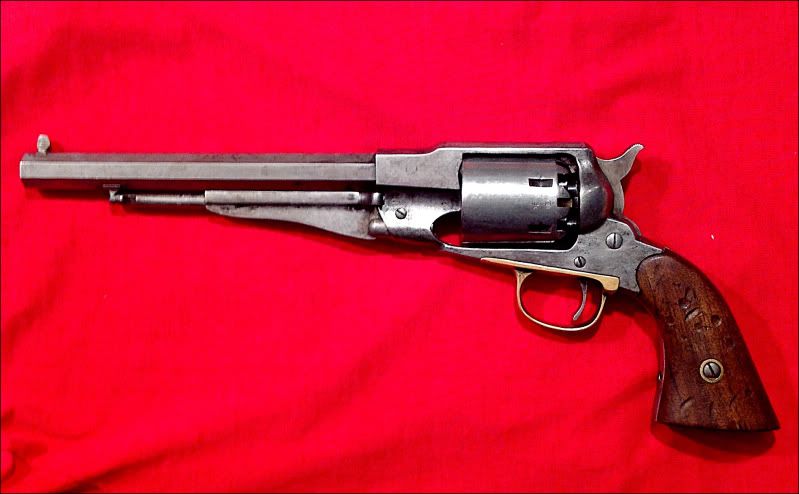Model12Win
Moderator
Hello everyone!
I am very much interested in cap and ball revolvers, and know there are some good companies out there making them. I own a Cimarron/Uberti 1851 Colt Navy, here it is:

I love this gun, but one thing has been bothering me. Do you see those shiny, red Italian grips? Did the original Colt Navy grips actually look like that, and were they finished in the same way? If not, then in fact how did they look and what materials were they made from/finished with?
If at all possible, I am going to try and make the grips look more authentic. I have read of some refinishing the Uberti wood furniture on various long guns, but I haven't found much on the Colt style revolvers or what would be the correct way to go about doing this.
I am not a cowboy action shooter, so for me authenticity is paramount short of buying a real $50,000 Colt Navy! So if anyone out there can help me out, I'd greatly appreciate it. I also plan to buy an Uberti 1847 Walker at some point in the future, and would appreciate information on it's original grip finish as well if anyone has that.
Thank you so much for your time, and have a great day everyone!
I am very much interested in cap and ball revolvers, and know there are some good companies out there making them. I own a Cimarron/Uberti 1851 Colt Navy, here it is:

I love this gun, but one thing has been bothering me. Do you see those shiny, red Italian grips? Did the original Colt Navy grips actually look like that, and were they finished in the same way? If not, then in fact how did they look and what materials were they made from/finished with?
If at all possible, I am going to try and make the grips look more authentic. I have read of some refinishing the Uberti wood furniture on various long guns, but I haven't found much on the Colt style revolvers or what would be the correct way to go about doing this.
I am not a cowboy action shooter, so for me authenticity is paramount short of buying a real $50,000 Colt Navy! So if anyone out there can help me out, I'd greatly appreciate it. I also plan to buy an Uberti 1847 Walker at some point in the future, and would appreciate information on it's original grip finish as well if anyone has that.
Thank you so much for your time, and have a great day everyone!

